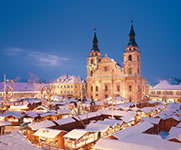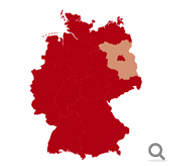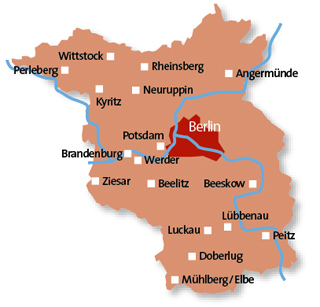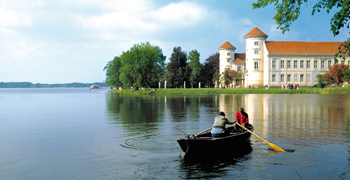
Historical Towns
- Historical towns in Brandenburg
- Cathedral Towns and Cities in Saxony-Anhalt
- The innovative Anhalt-Wittenberg Region
- Enchanting towns in the Harz
- The beautiful towns and cities in Saxony
- Towns and cities of culture in Thuringia
- Beautiful towns of Franconia
- East Bavarian traditional towns
- Alpine towns in the Allg�u
- The eastern Akpine Foothills and their towns
- Towns and villages in the western foothills of the Alps
- Mediterranean towns on Lake Constance
- Towns in the Swabian Alb
- Unspoilt towns in the Black Forest
- Towns for refined tastes in the Heilbronner Land
- Towns in the Odenwald
- Wine towns in Rheinhessen
- Saarland, a region of contrasts
- Romantic towns in the Hunsr�ck and Nahe Regions
- Idyllic towns and villages in the Moselle Region
- The Ahr Rhine Eifel holiday region
- Wine towns on the Romantic Rhine
- Modern towns and cities in the Bergisches Land Region
- The Lahn Valley and its fairytale towns
- Historical towns in Kurhessisches Bergland
- Sauerland's scenic towns
- Fairytale towns in the Weserbergland Hills
- Majestic towns in the M�nsterland Region
- The nine stars of Lower Saxony
- North and East Frisian Islands
- Vibrant Schleswig-Holstein
- Maritime towns along Mecklenburg's Baltic Coast
- Historical Hanseatic Towns
- Germany's Baltic Sea Islands
- The Mecklenburg Lakes
Contact and information
Lakes and leafy avenues a `Picture Book for Lovers'

Rheinsberg
Picturesque Rheinsberg was assured of a place in the literary pantheon by Kurt Tucholsky's Picture Book for Lovers, in which two city dwellers enjoy an inspiring weekend in the countryside. The author is now honoured in Rheinsberg at the museum that is his lasting memorial. The routes into Rheinsberg, part of the German Avenues Route, lead from lake to lake along close-set avenues of trees.Peitz
Peitz, a Brandenburg enclave in Bohemian Lusatia, was converted into a citadel in the 16th century, making it the region's most secure defensive site. After the Seven Years' War the fortifications fell, though the tower, with walls that are six metres thick, is still intact. Peitz has a fascinating if unusual townscape including a bürgerhaus and an inn dating from the early 17th century.Neuruppin
Neuruppin, once the jewel in the March of Brandenburg's crown and a garrison town under Frederick the Great, is the birthplace of Theodor Fontane, the 19th-century writer whose travel journals and novellas with detailed observations of his homeland and its people earned Brandenburg a place in world literature. Old Ruppin burned down completely in 1787 and was rebuilt in typical Prussian style with a chessboard groundplan and uniform buildings. Neuruppin has long been regarded as the epitome of neo-classical town design. Fontane's school, the abbey church, the old grammar school and the Amalthea garden with its Apollo temple are open to visitors.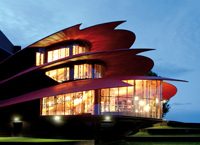
Potsdam
Among Prussia's former ducal towns, Potsdam is considered the elegant sister to big-brother Berlin. Long before the idea of European unity took shape, Potsdam was already ahead of the game: with its Russian Alexandrowka colony, Dutch quarter, Bohemian weavers' quarter and, more recently, an influx of celebrities from showbusiness and politics. In Perleberg, in the north-west of the region, the old quarter is designed around the contours of the river rather than the chessboard layout of many Brandenburg towns. The road leading to its historical centre with Kirchplatz and Grosser Markt squares is lined by handsome period houses. Art historical epochs then begin to blur: the 14th-century Gothic Church of St. James and the 15th-century town hall rise up above gabled houses from the 16th and 17th century.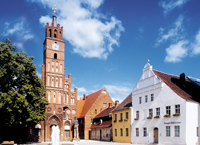
Brandenburg
Brandenburg, the oldest and most important town in the March of Brandenburg, has been a royal town since the Slavic period. Cathedral island the diocesan seat and the settlement's original core remained independent until 1929. The Cathedral of St. Peter and St. Paul, with its museum and sumptuous medieval interior, is one of the strongest reminders of Brandenburg's historical stature. Since 1474 the town has been guarded, so to speak, by the towering sandstone statue of Roland, a symbol of civic liberty and prosperity which was moved from the new town hall to the old town hall over 60 years ago. Brandenburg is delightfully set amid the river and lakeland scenery of the Havel.Picture-book scenery
Brandenburg's towns are surrounded by 15 nature reserves, conservation areas and national parks, which cover around one third of the region. With thousands of lakes and waterways extending to tens of thousands of kilometres, there are lots of water-based leisure activities to enjoy. The Spree Forest biosphere reserve, whose intricate waterway network extends for several hundred kilometres in an unspoilt inland delta, is a bicultural gem: every village, road and waterway has both a Sorbian and a German name. The Spree Forest and Lusatia are home to Germany's only ethnic minority: the Sorbs, a Slavic people who have succeeded in keeping their language and customs intact.Speciality food and drink
Brandenburg has a hearty food tradition. You'll discover that Kyritz's Mord und Totschlag beer lives up to its name of blood and thunder, and learn that Angermünde noodles are in fact a potato, not a pasta, dish. Almost every town has a new speciality to enjoy: fruit wine in Werder, carp in Peitz and asparagus in Beelitz, not to mention potato fritters from Fläming and Spree Forest gherkins.Travel Planner
Select an option...
Romance and charm
Visit idyllic Lenzen Castle in the heart of the Elbe river biosphere reserve. Soak up the castle's delightful atmosphere and perhaps stay for longer at the romantic castle hotel.
Food and drink
Mord und Totschlag this dark-coloured schwarzbier has been brewed in Kyritz since the 17th century and lives up to its name which translates as `blood and thunder'.
History and tradition
The Museum of the Thirty Years' War occupies seven floors inside the tower at the bishop's palace in Wittstock. This late-medieval site with ancient walls and a distinctive tower is the ideal setting for this permanent exhibition.
Nature and scenery
Spree Forest biosphere reserve an unspoilt, woodland river landscape where careful human intervention has helped create a habitat for many animals and plants. In 1991 the Spree Forest became a UNESCO biosphere reserve.




